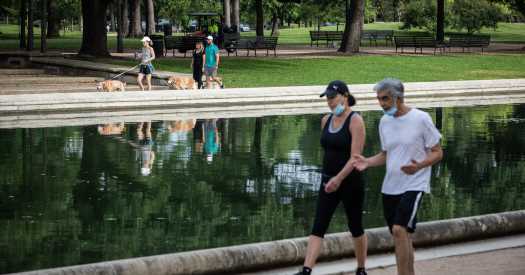Becoming more physically active today might help us avoid thousands of dollars in health care costs later, according to a new study of exercise and Medicare claims. It finds that people who start to exercise before or during middle age typically save anywhere from $824 to $1,874 annually on health care costs after retirement, and the earlier they start their workouts, the greater those savings can be.
The study involved mostly well educated white men and women and has other limitations, but the findings highlight how significantly exercise might benefit people’s bank accounts, as well as their bodies.
By now, we know that we should move. Physical activity is associated with longer life spans and lower risks for a host of serious conditions, including Type 2 diabetes, depression, cancer, arthritis, obesity and dementia. But disheartening studies show that, despite these allures, nearly half of American adults rarely, if ever, exercise.
This pervasive physical torpor has personal and societal costs. A 2015 study estimated that inactivity drives at least $117 billion in annual health care spending in the United States, representing about 11 percent of the total.
Whether and to what extent getting up and moving might drop our share of that $117 billion, though, especially as we age, has been less clear. Past research suggests that physically active older people spend less on health care than other retired people, thanks in large part to needing fewer doctor visits and medications.
But those and similar studies focused on exercise habits at one point, typically when people were middle-aged or already elderly, and do not tell us what happens to health care costs if we change our habits over time. They also cannot pinpoint any optimal age, if there is one, to begin or ramp up a workout routine for the sake of our long-term finances and health.
So, for the new study, which was published in February in BMJ Open Sport & Exercise Medicine, researchers at the National Cancer Institute, the Centers for Disease Control and Prevention and other institutions decided to look for links between people’s activities at various ages and their health care costs, years later.
The researchers began by turning to the handy NIH-AARP Diet and Health Study, a large-scale database of information about more than 500,000 older Americans, most of them white, who belong to the AARP. These study volunteers had agreed to fill out extensive forms about their lives and health.
Among these was a lengthy questionnaire asking how many hours each week participants had spent exercising or playing sports at multiple points throughout their lives. Many of the study participants also agreed to allow scientists to access their Medicare claims after they joined the insurance program, in order to track health care expenses.
Now, the National Cancer Institute scientists pulled records for 21,750 of the volunteers and began grouping them by workouts, noting changes over the decades. Did these men and women start exercising more or less often during their 20s, as young adults? Did they take up or abandon workouts in middle age? Or were they consistently active — or the reverse — throughout their lives?
Then, the researchers compared these groups and at least a year’s worth of their eventual Medicare claims. And they found notable disparities.
Those men and women who reported exercising moderately throughout their adult lives, walking or otherwise being in motion for a few hours most weeks, saved an average of $1,350 annually — or about 16 percent — on health care expenses after reaching age 65 compared to sedentary people.
Interestingly, a different group, who said they had changed their routines, ramping up how often they exercised during their 20s, gained even greater monetary bang from their exercise, saving an average of $1,874 annually on health care after age 65. Even if some of these exercisers then let their increased routines slide during middle age, reducing how often they worked out in their 40s and 50s, they still spent about $860 less on health care later than people who almost never exercised.
These data intimate that being active when we are young might have especially potent and lingering impacts on our health care costs as we age.
But even waiting until middle age to become active proved beneficial in this study. People who increased how often they exercised after age 40 later spent, on average, $824 less annually on health care than their inactive peers.
In other words, “it’s never too late to start” exercising, says Diarmuid Coughlan, a research associate at Newcastle University in England, who, as a research fellow at the National Cancer Institute, led the new study.
Of course, this study was observational and can show only that being active is associated with lower health care costs, not whether exercising causes expenses to change. It also relied on people remembering and honestly reporting their pasts, which can be tricky.
Still, “this is fairly solid data,” given the size of the group and extent of the questionnaires, says Charles Matthews, a cancer epidemiologist at the National Cancer Institute, who oversaw the new study. The findings “reaffirm the value of physical activity,” he concluded, whatever our age.
Source: Read Full Article
